Ohrdruf: Photographs
Click Left/Right to Scroll
-
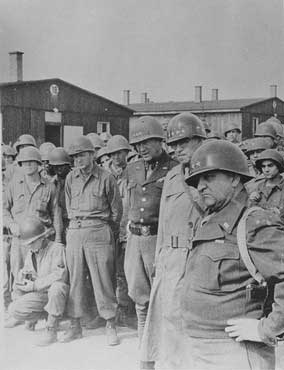 Generals Manton Eddy, Omar Bradley and George Patton (l-r) visit Ohrdruf
Generals Manton Eddy, Omar Bradley and George Patton (l-r) visit Ohrdruf -
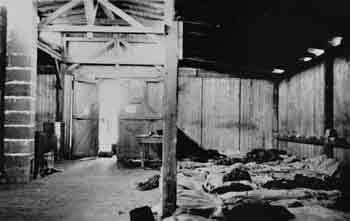 The interior of a barracks in the newly liberated camp
The interior of a barracks in the newly liberated camp -
 Bodies awaiting cremation at Ohrdruf.
Bodies awaiting cremation at Ohrdruf. -
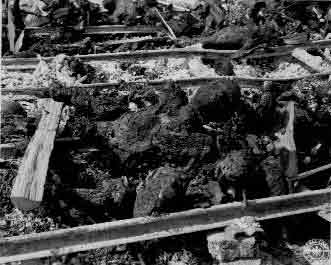 Bodies burned on railroad ties at Ohrdruf
Bodies burned on railroad ties at Ohrdruf -
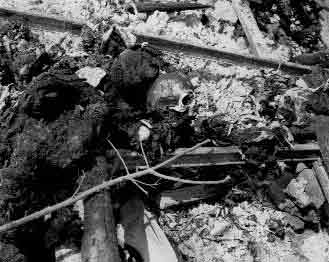 Bodies burned on railroad ties at Ohrdruf
Bodies burned on railroad ties at Ohrdruf -
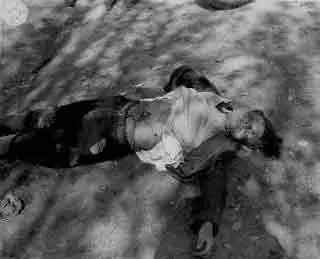 Photo believed to be a dead Nazi female guard from Ohrdruf. She was either killed by US troops or by prisoners.
Photo believed to be a dead Nazi female guard from Ohrdruf. She was either killed by US troops or by prisoners. -
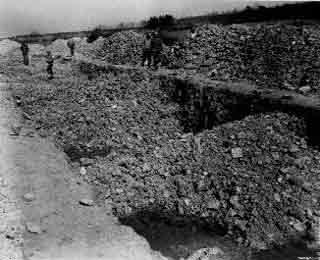 Ohrdruf was the first camp found in Germany. It was found by members of Patton's Third Army and was photographed by his official photo unit. All bodies were exhumed by Germans and reburied.
Ohrdruf was the first camp found in Germany. It was found by members of Patton's Third Army and was photographed by his official photo unit. All bodies were exhumed by Germans and reburied. -
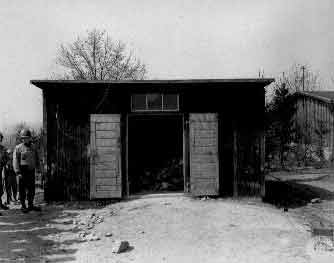 Waiting shed. Inside can be seen the stacked bodies waiting to be placed in the furnaces.
Waiting shed. Inside can be seen the stacked bodies waiting to be placed in the furnaces. -
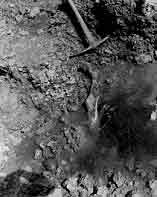 Digging of a pit at Ohrdruf that yielded thousands of bodies which were later buried by the Germans under supervision by the U.S. Army.
Digging of a pit at Ohrdruf that yielded thousands of bodies which were later buried by the Germans under supervision by the U.S. Army. -
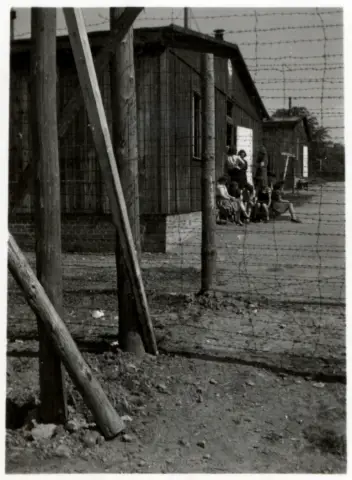 View from behind a barbed wire fence of female survivors sitting outside a barrack in Ohrdruf.
View from behind a barbed wire fence of female survivors sitting outside a barrack in Ohrdruf. -
 General Eisenhower visiting camp at Ordruf.
General Eisenhower visiting camp at Ordruf. -
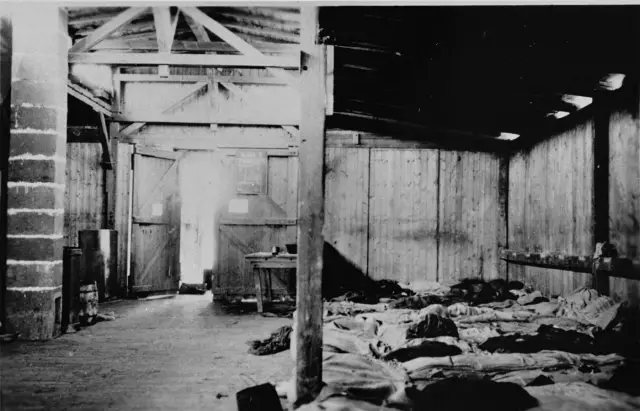 Interior of a barracks in the newly liberated Ohrdruf concentration camp.
Interior of a barracks in the newly liberated Ohrdruf concentration camp. -
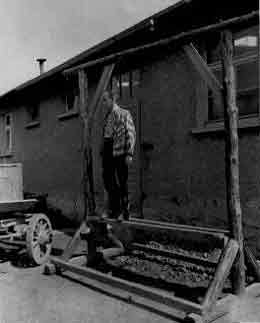 Ohrdruf Gallows.
Ohrdruf Gallows. -
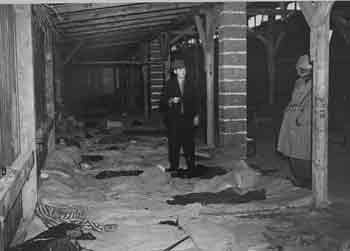 A survivor of the Ohrdruf concentration camp shows U.S. Army Colonel Hayden Sears the inside of a barracks where 196 prisoners lived.
A survivor of the Ohrdruf concentration camp shows U.S. Army Colonel Hayden Sears the inside of a barracks where 196 prisoners lived. -
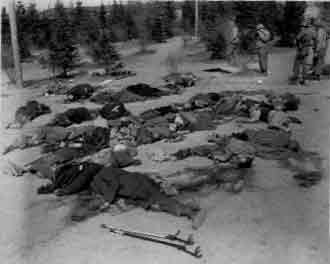 Most of the 40 prisoners killed by Nazi guards as the US Army approached to liberate Ohrdruf
Most of the 40 prisoners killed by Nazi guards as the US Army approached to liberate Ohrdruf -
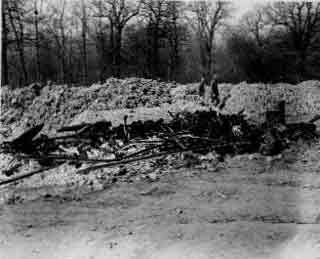 Ohrdruf was a satellite camp of Buchenwald
Ohrdruf was a satellite camp of Buchenwald -
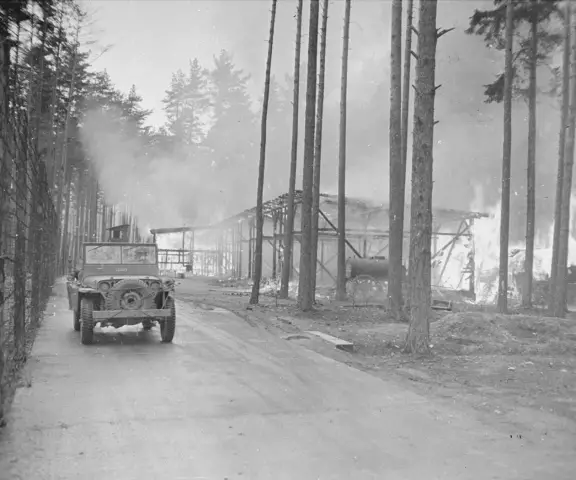 An American soldier drives past buildings set afire by survivors after the SS evacuated Ohrdruf
An American soldier drives past buildings set afire by survivors after the SS evacuated Ohrdruf -
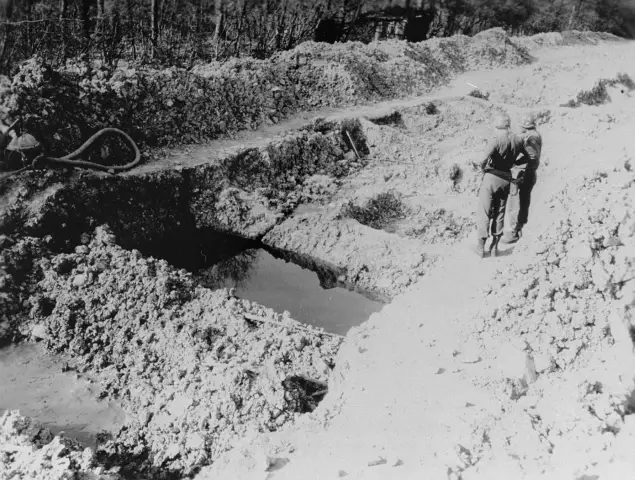 Two U.S. Army medics stand near mass graves in the Ohrdruf concentration camp
Two U.S. Army medics stand near mass graves in the Ohrdruf concentration camp -
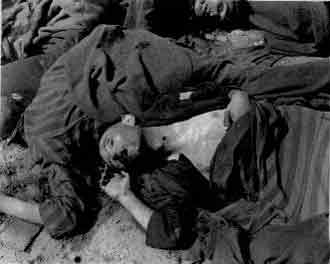 Victims at Ohrdruf
Victims at Ohrdruf -
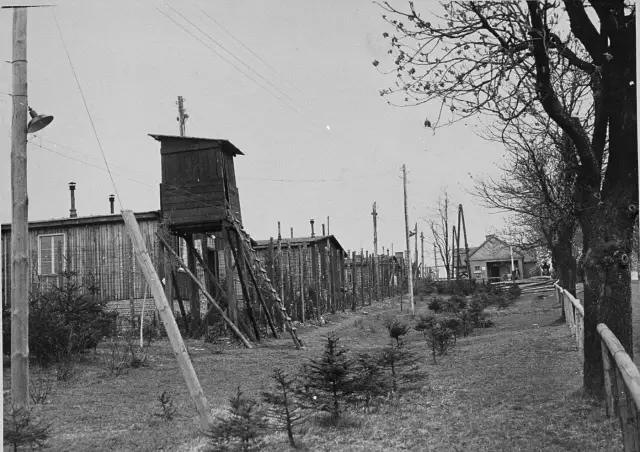 View of a section of Ohrdruf including a watchtower, barracks and barbed wire fencing.
View of a section of Ohrdruf including a watchtower, barracks and barbed wire fencing. -
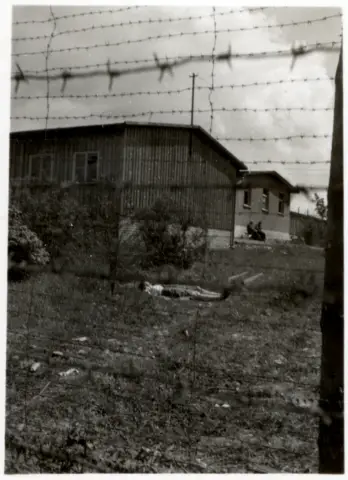 View from behind a barbed wire fence of a survivor lying on the ground outside a barrack in Ohrdruf
View from behind a barbed wire fence of a survivor lying on the ground outside a barrack in Ohrdruf -
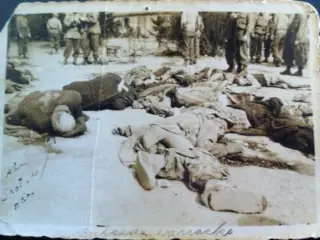 Poles and Russians were shot when they couldn't work anymore
Poles and Russians were shot when they couldn't work anymore
Sources: U.S. Holocaust Memorial Museum, Center for Holocaust and Genocide Studies: Educational Resources, Signal Corps U.S. Army and 166th Signal Photo Co., National Archives and Records Administration, College Park., Kristin Gaffney-Roca.


